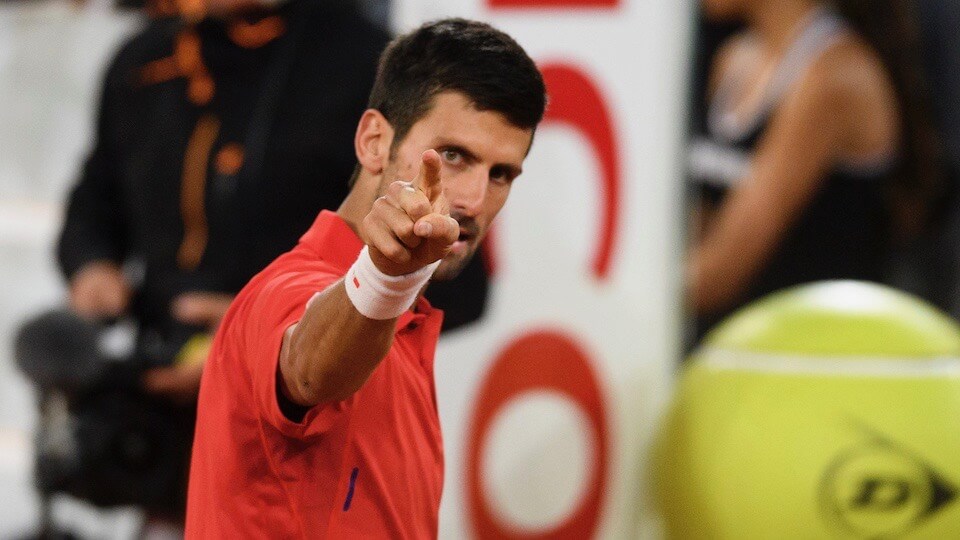Rafael Nadal is a master on the clay. Nobody has dominated the theory, skill and technique like he has. His record on the surface outshines that of anyone else in the history of the sport. The Mutua Madrid Open has been no exception to the player from Manacor’s dominance of the surface throughout his career; he has also outplayed the rest in his home tournament, with three trophies (four in total). Despite this fact, the Caja Mágica hosts the most openly contested clay Masters 1000 on the ATP World Tour.
So much so that only once has a player successfully defended his title (Nadal: 2013, 2014), but in this decade as many as four players have got their hands on the trophy, more than any other tournament of this type. Apart from the Spaniard, Roger Federer, who was the first champion on the red dust, has three victories (2006, 2009, 2012), Novak Djokovic can claim two (2011, 2016), and Andy Murray overcame his demons on the clay in 2015.
The Mutua Madrid Open is no man’s land and only a few can claim to have owned it, specifically the big four, who have shared all the triumphs on clay among themselves. Moreover, no other active player has had their name engraved on the famous trophy since 2002. Ex-world number ones such as Andre Agassi (2002), Juan Carlos Ferrero (2003) and Marat Safin (2004) have been crowned here. Also David Nalbandian (2007). The rest of the spoils have been shared between Nadal, Federer, Djokovic and Murray.
Hopefuls
Madrid’s centre court not only produces plenty of magic, it also throws up a few surprises. There is barely anything we can be sure of this 5 to 14 May. All we know is that Djokovic will be defending his crown and the 1,000 points at stake. Since the change of surface, the Belgrade native has had an 83.3% success rate in 18 matches, six percent better than his total for the tournament since his debut in 2006. This despite nearly reaching the final on hard court in 2007, before falling in the semis to the player who would eventually be crowned (Nalbandian).
But when the clay came along, so did the best version of Djokovic. In 2011 he completed a streak of 32 consecutive victories, beating off Nadal for the first time on the surface in the final to win his first Mutua Madrid Open title. After an unexpected defeat in his 2013 opener to Grigor Dimitrov, the Serb came back last year and made the trophy his. In his wake he left three top-10 players: world number 10 Milos Raonic in the quarters, number six Kei Nishikori in the semi-finals and number two Andy Murray in the final.
The Scot found in the Mutua Madrid Open the piece of the puzzle he was lacking in order to become a complete player, and as dangerous on clay as on the fast surfaces. After years with nothing to show for the sweat he shed on the clay, the Caja Mágica finally gave the Scot something to smile about in 2015. Following five years of repeatedly failing to make it past the quarters, Murray shone on the Madrid clay. He was close, however, to an early exit against Philipp Kohlschreiber. But it was a mere blip. Andy had matured his game and he wowed the crowd, as if he were somehow giving something back for the years he spent training in Spain during his adolescence. Raonic, Nishikori and Nadal were his last three scalps before picking up his then biggest prize on clay.
But he was not about to rest on his laurels and last season he reached the final once more, with another victory over the Mallorcan. His record in their head-to-head had gone from 0-7 to 2-1 since the 2015 final. Nonetheless, this time he was unable to make the final step against Djokovic, despite taking the match to the third set in another chapter in a battle for the world number one spot that continued until the end of the season.
However, just when it looked like Andy and Novak were the only players capable of dominating the game and the rest had practically been written off, the magic of Nadal and Federer came back into the picture. They may have failed to convince some before, but the Spaniard won over some critics early this season by fighting for the biggest tournaments in 2017. And the Mutua Madrid Open will be no exception. The player from Manacor has done more than enough to make sure his name appears among the favourites; this year he will be bidding for his tenth semi-final, he is the only player to successfully defend a title in the Caja Mágica and nobody has lifted the trophy as often as he has (2005, 2010, 2013, 2014), as well as three other finals (2009, 2011, 2015). Under the Madrid sun, his forehand is lethal.
The spring is very much to Nadal’s liking. It is this part of the season where he has claimed most of the trophies in his cabinet. As many as 40 of the 69 titles he has won, or 57% of all his crowns. Specifically, in May the red dust has given him 12 trophies. And this season he is prepared to stay disciplined. More than 400 matches on the slowest surface and a success rate that makes him the best clay player of all time mean he is a strong candidate for the Ion Tiriac Trophy once again this year.
Making themselves at home
The ATP World Tour calendar only provides two home tournaments for the Spanish players and in May they can enjoy one of the big events in the Caja Mágica. It is a tournament that has provided a good dose of points to home players in recent years, David Ferrer, Roberto Bautista and Pablo Andújar are proof of that.
The Javea native can boast six appearances where he has reached at least the quarters, although last season he bowed out in the previous round to Tomas Berdych. Ferrer has an overall record of 21-8 since 2009.
As for Bautista and Andújar, they had their moments of glory in 2014 and 2013, respectively, when they came close to reaching the final. The man from Castellon let us know that his racquet concealed the power needed to reach the top 20, exactly as he has done in recent seasons, while the Cuenca native had the best week of his career, leaving three players who have graced the top 10 in his wake; Marin Cilic, John Isner and Kei Nishikori.
Other names, such as those of Fernando Verdasco and Feliciano López always ring around the Mutua Madrid Open. And not just because of their geographical relationship with the tournament, also because their games suit the clay courts better than any other. The Madrid native has two quarter-finals to his name (2009, 2012), while the man from Toledo reached the same stage in 2014 (clay) and 2003, 2007 and 2008 (indoor hard court). This year, the Madrid clay will also be testing the mettle of Pablo Carreño, who is yet to break through the second round.
Other hopefuls
The Mutua Madrid Open is a special tournament, where the service is more important than at any other clay tournament. And this is where the tour’s big hitters who can also get around the court have an advantage. Such is the case of Tomas Berdych, Juan Martín Del Potro, Marin Cilic and even Milos Raonic. They all boast a big serve and enough agility to put up a fight on clay.
The Czech is a regular in the later stages of the competition and in the last six years he has always, at least, reached the quarter-finals. In 2012 he pushed Federer to the limit and finished runner-up. The Argentinian, a semi-finalist in 2009 and 2012, should also be included in the group of hopefuls for the title. While Raonic and Cilic’s ability to generate free points gives them an advantage before a ball has been hit.
Names who have been knocking on the door in tournaments of this stature for some time cannot be ignored either. Such as Dominic Thiem, who is learning to live among the top 10 players in the world, David Goffin, who broke into the top 10 for the first time this year, and Grigor Dimitrov who has shown glimpses of what it takes to mix it with the best.
In total 56 players will be fighting it out for the same prize; the Ion Tiriac trophy. Everything is in place for battle to commence. From 5 to 14 May the Mutua Madrid Open clay will be there to be conquered.
Threat to the favourites
Nobody is safe from upsets in the Caja Mágica. There is no chance of immunity or immortality. Despite the fact that the favourites have won all the titles since the tournament made the switch to clay (2009), each of them has suffered unexpected results. Nadal was on the receiving end in 2012 in his last-sixteen match against Fernando Verdasco; Djokovic bowed out in his opener in 2013 in the second round against Grigor Dimitrov, when the Bulgarian was the world number 28; Murray was helpless as first Thomaz Bellucci (2011), and then Santiago Giraldo (2014) prevented him from reaching the third round; even Stan Wawrinka, a finalist in 2013, made an early exit in 2011, losing in the first round to Guillermo García López.
Nishikori, a score to settle
Despite being a member of the top 10, Nishikori has come in under the radar in recent years, but he never fails to impress. The Japanese player has finished among the top four at the tournament for three seasons on the trot, with 11 victories in 14 matches. The three defeats came against Rafa Nadal (2014 final), Andy Murray (2015 semi-final) and Novak Djokovic (2016 semi-final). Will 2017 be his year?

























































